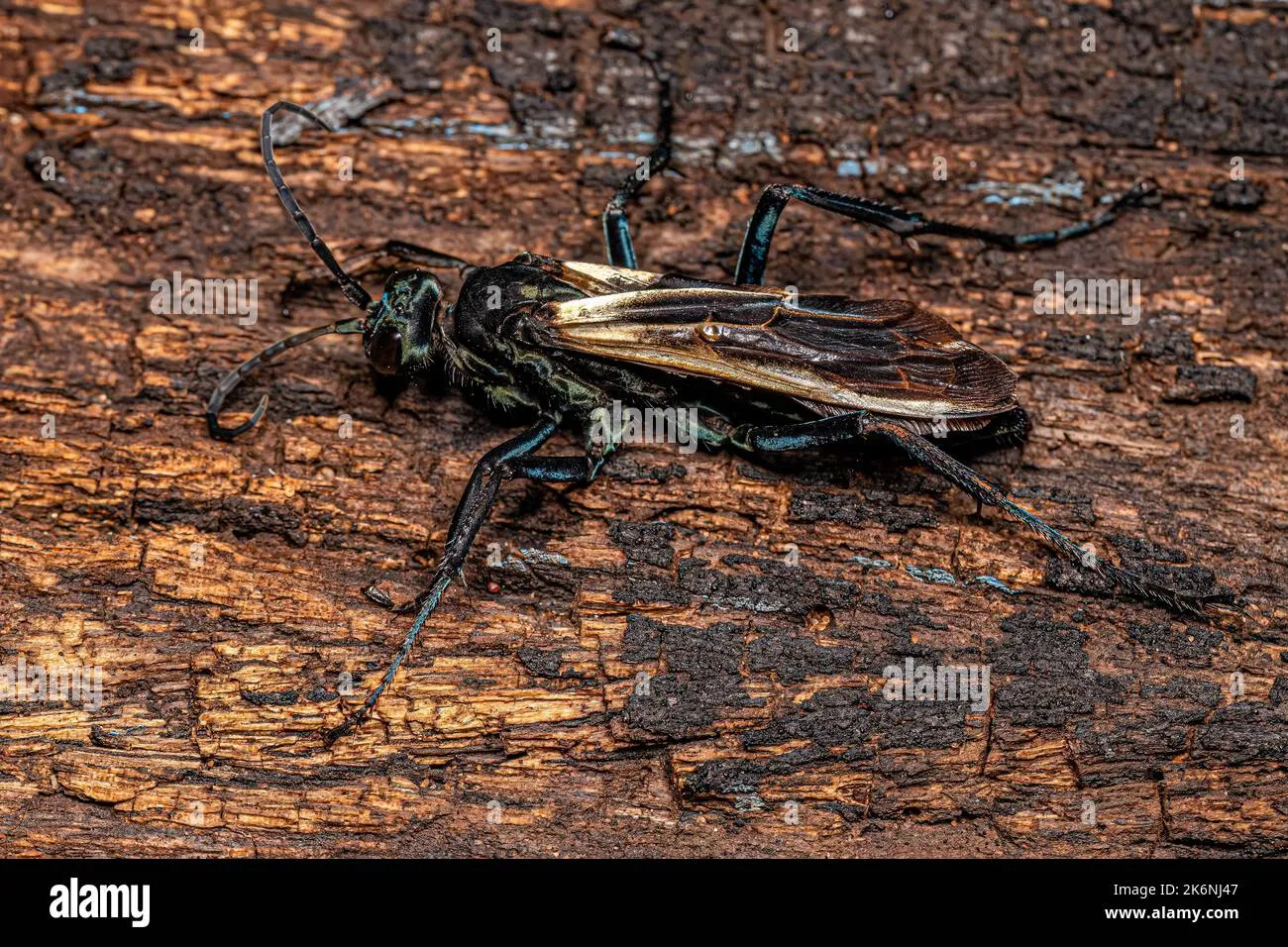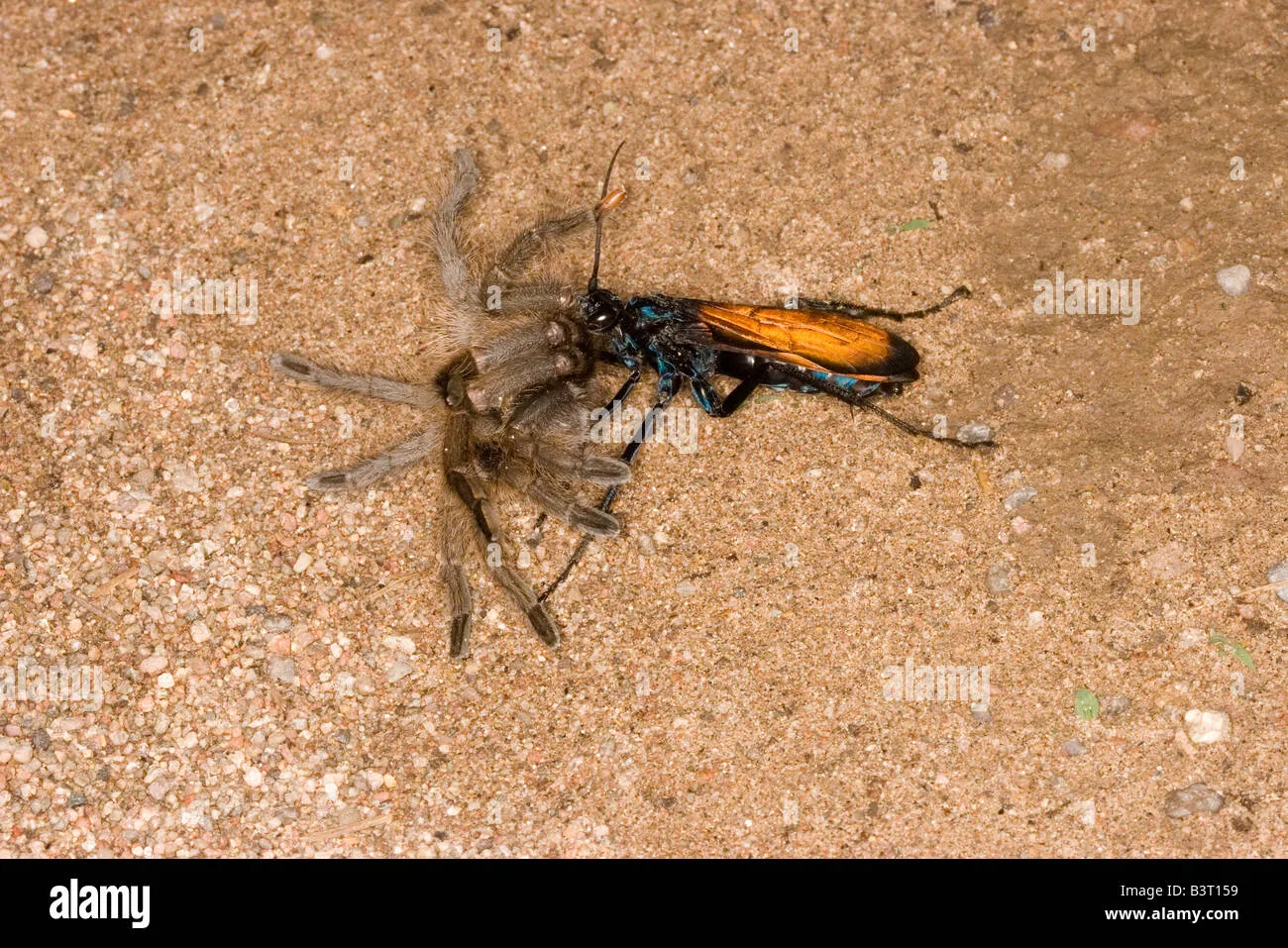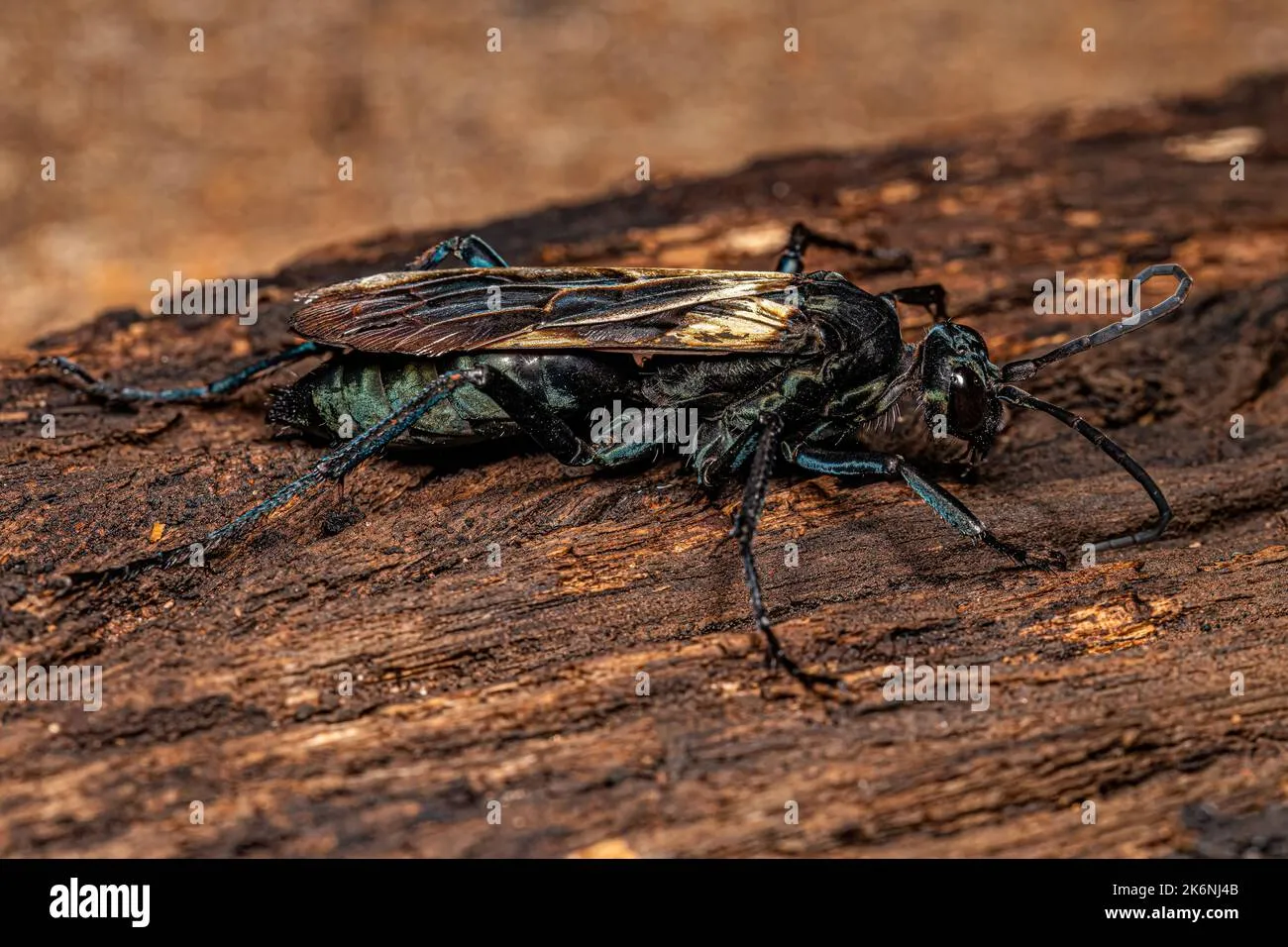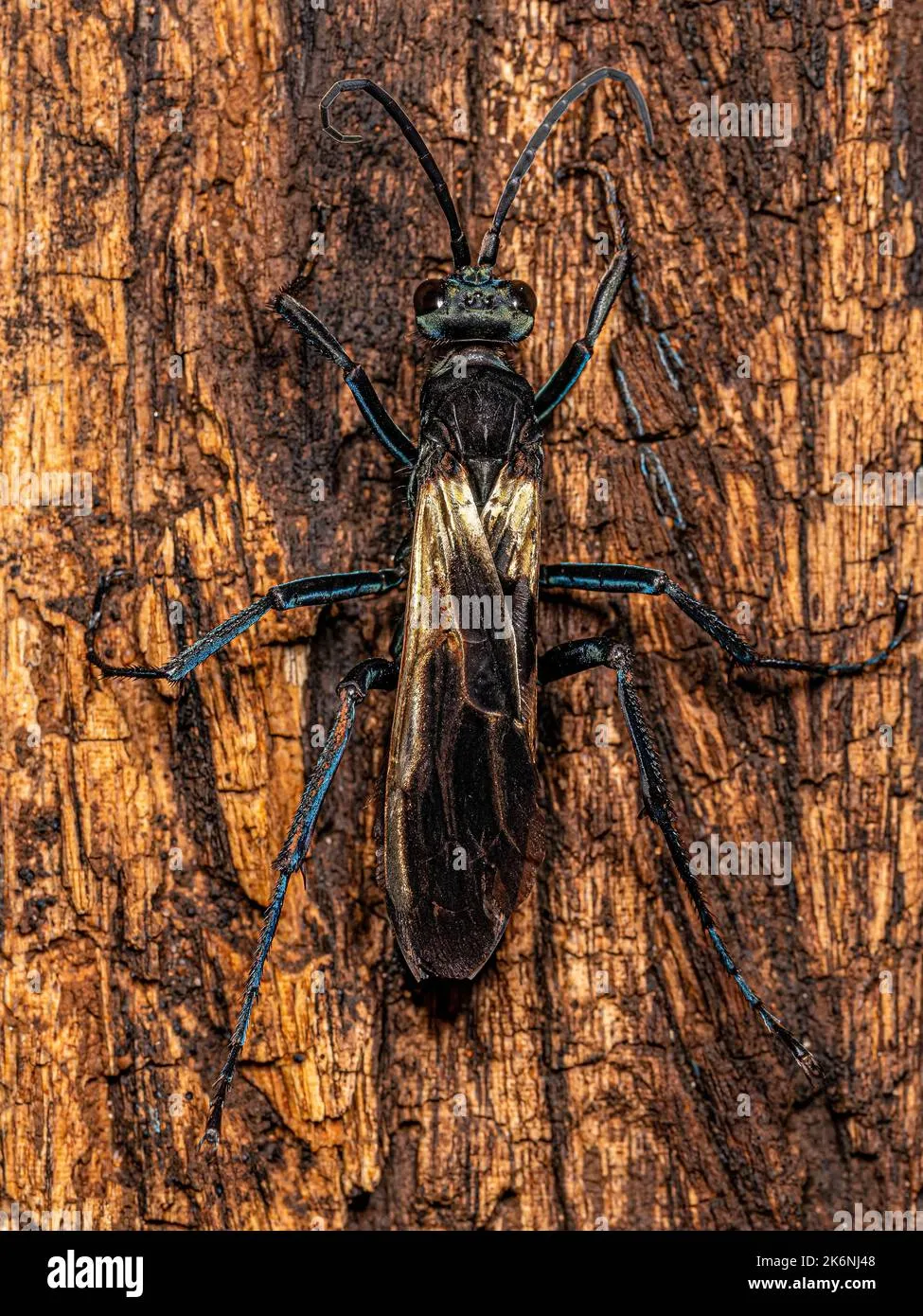Avispa Halcon Tarantula: Top 5 Astonishing Facts
The Avispa Halcon Tarantula, also known as the Tarantula Hawk, is a remarkable insect, a testament to nature’s ability to create both beauty and a formidable presence. This impressive wasp, belonging to the Pompilidae family, is not only known for its striking appearance but also for its dramatic life cycle, involving a fearsome dance between predator and prey. This article delves into five amazing facts about this fascinating creature, unveiling the secrets of its survival and its vital role in the ecosystem. From its paralyzing sting to its complex hunting strategies, prepare to be amazed by the Avispa Halcon Tarantula.
What is the Avispa Halcon Tarantula?
The Avispa Halcon Tarantula is a species of spider wasp renowned for its size, its painful sting, and its unique predatory behavior. These wasps are solitary creatures, meaning they do not live in colonies like bees or ants. Instead, each female is responsible for her own hunting, reproduction, and nesting. They are native to the Americas, with the greatest diversity found in the southwestern United States and parts of South America. The Avispa Halcon Tarantula plays a vital role in controlling tarantula populations, acting as a natural regulator within its environment, contributing to the balance of the ecosystem.
Appearance and Identification

The Avispa Halcon Tarantula boasts a distinctive appearance. They are typically large wasps, often measuring between 2 to 5 centimeters in length. Their bodies are a vibrant combination of colors, usually featuring a metallic blue-black body with rusty orange wings. This striking coloration serves as a warning signal to potential predators, indicating their potent sting. The size and bold colors make them easily identifiable in their natural habitat. Their long, spidery legs are adapted for navigating the ground and searching for their tarantula prey, which are then utilized as a host for their offspring.
Distinguishing features include powerful mandibles used for manipulating prey and a long, curved stinger. Their antennae are long and used to sense their environment. The vibrant colors of the Avispa Halcon Tarantula are a clear indication of their potential danger, a warning to other animals that they are best left alone. The wings are held out while searching for prey and while preparing for a sting to a tarantula, the wasp will try to get the tarantula on its back.
Habitat and Geographic Distribution
The Avispa Halcon Tarantula thrives in warm, arid environments. Their preferred habitats include deserts, grasslands, and scrublands. These wasps are most commonly found in the southwestern United States, particularly in states like Arizona, New Mexico, and Texas. They also inhabit parts of South America. The availability of tarantulas, their primary prey, is a crucial factor in determining their distribution. The Avispa Halcon Tarantula are adapted to the harsh conditions of these environments, utilizing their powerful mandibles and sting to survive. These regions provide suitable nesting sites and a plentiful food source, ensuring the survival of the species.
Within these environments, they can be found near rocky areas and underbrush. The specific location varies depending on the tarantula population. The wasps require these specific environmental conditions for their life cycle. This geographic distribution showcases their adaptability to a range of climates, as long as the conditions are suitable for their survival.
The Avispa Halcon Tarantula’s Sting A Painful Experience
The Avispa Halcon Tarantula’s sting is notoriously painful. It is often described as one of the most excruciating insect stings known to humans. The pain is immediate and intense, often lasting for several minutes, sometimes even hours. The intensity of the sting has earned them the nickname, ’tarantula hawk’. While the sting is incredibly painful, it is rarely life-threatening to humans. The primary purpose of the sting is to paralyze tarantulas, their intended prey, allowing the wasp to complete its reproductive cycle. The venom itself is composed of a cocktail of neurotoxins that affect the nervous system.
The stinger on the Avispa Halcon Tarantula is long and strong, perfectly designed for penetrating the thick exoskeleton of a tarantula. Once the wasp stings the tarantula, it delivers a paralyzing dose of venom. The victim remains paralyzed, but alive, allowing the wasp to drag it back to its nest. Though the sting is very painful, there are few other long term effects in humans.
The Avispa Halcon Tarantula’s Hunting Strategy

The Avispa Halcon Tarantula exhibits a complex and fascinating hunting strategy. First, the female wasp will meticulously search for tarantulas, often crawling along the ground or exploring burrows. Once a tarantula is located, the wasp carefully approaches, assessing the situation and looking for the opportunity to strike. Then, the wasp will flip the tarantula over and deliver a single, precise sting to a nerve ganglion in the tarantula’s abdomen, paralyzing it. This requires precision and a strategic approach to avoid the spider’s fangs.
The wasp carefully drags the paralyzed tarantula back to its nest. The wasp will then lay a single egg on the tarantula’s abdomen. When the egg hatches, the larva begins to feed on the still-living tarantula. The larva then spins a cocoon and pupates, eventually emerging as an adult wasp, ready to repeat the cycle. The hunt shows the wasp’s ability to adapt to a unique prey species.
How Does the Avispa Halcon Tarantula Hunt?
The hunting process begins with a patient search, often in the tarantula’s known habitat. The wasp uses its keen senses to locate the tarantula. Once the tarantula is found, the wasp will engage in a careful approach, often circling the spider to find the ideal angle of attack. The wasp must avoid the tarantula’s fangs and venomous bite while delivering a sting to a vulnerable spot on the abdomen. This requires a combination of speed, agility, and strategic planning, which is critical to successfully paralyzing the tarantula.
After successfully stinging the tarantula, the wasp carefully drags its prey to its nest, preparing it for the next stage of the life cycle. The entire process demonstrates the wasp’s unique predatory adaptation and behavioral patterns.
Diet and Prey
The primary prey of the Avispa Halcon Tarantula is, as the name suggests, tarantulas. However, the diet of the adult wasp consists primarily of nectar. The female wasp’s diet is largely driven by the energy requirements for hunting and reproduction. The tarantula provides a protein-rich food source for the developing wasp larva, ensuring its survival. The adult wasp’s diet consists of nectar from various flowers, which fuels its activities, particularly its hunting and mating behaviors.
The Avispa Halcon Tarantula can also feed on smaller spiders if necessary. The wasp’s dietary habits and prey selection demonstrate the unique relationship between predator and prey, which plays a role in the ecosystem. The wasp’s ability to hunt tarantulas and rely on nectar allows it to thrive in diverse habitats.
The Avispa Halcon Tarantula Life Cycle

The life cycle of the Avispa Halcon Tarantula is an intricate process that begins with the adult wasp’s search for a tarantula. Once a tarantula is paralyzed, the wasp drags it to its nest, often a burrow in the ground or a pre-existing cavity. The wasp then lays a single egg on the tarantula’s abdomen. The egg hatches, and the larva begins to feed on the living tarantula, consuming it from the outside in. This parasitoid behavior is essential for the survival of the wasp’s offspring. The larva then spins a cocoon around itself, where it pupates. Finally, the adult wasp emerges from the cocoon, ready to begin the cycle again.
The entire life cycle, from egg to adult, can take several weeks or months, depending on the environmental conditions and availability of prey. This complex lifecycle demonstrates the delicate balance of nature and the specialized adaptations of the Avispa Halcon Tarantula.
Mating and Reproduction
Mating in the Avispa Halcon Tarantula typically occurs after the females have emerged from their cocoons. The males are generally smaller than the females and actively search for mates. After mating, the female wasp begins the hunt for tarantulas, and the cycle repeats. The female wasp will then start hunting for tarantulas to provide a host for her eggs. The mating process is essential for reproduction and the continuation of the species. The Avispa Halcon Tarantula’s reproductive strategy ensures the survival of the species and its vital role in the ecosystem.
The Role of the Avispa Halcon Tarantula in the Ecosystem
The Avispa Halcon Tarantula plays a significant role in its ecosystem, primarily as a predator of tarantulas. By preying on tarantulas, they help regulate the tarantula population, preventing potential imbalances. The Avispa Halcon Tarantula also serves as a food source for other predators, such as birds and lizards, contributing to the overall biodiversity of the environment. Their presence promotes a more stable and balanced ecosystem. Their specialized hunting behavior contributes to the delicate balance of the natural world.
The Avispa Halcon Tarantula, though feared for its sting, is an essential component of its ecosystem. The role they play highlights the interconnection of life and the impact of each species on its surrounding environment.
